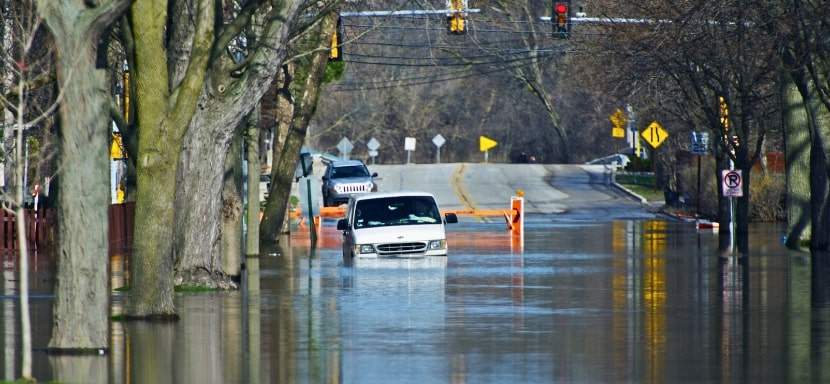How to Survive a Car Jacking

Car Jacking Survival Tips and Strategies
Carjacking incidents in the United States have surged, with many cities reporting double-digit increases in cases year-over-year. This alarming trend underscores the need for heightened awareness and preventive measures among drivers nationwide.
Carjacking, the act of forcibly stealing an occupied car, poses a serious threat to drivers worldwide. Understanding how to react can significantly decrease the risk of harm, turning a potentially dangerous situation into a survivable one.
This comprehensive guide will equip you with the knowledge and strategies to protect yourself and your passengers.
- Preventive Measures: Highlights the importance of proactive security steps like vehicle locks and awareness to deter carjackings.
- Incident Response: Advises compliance during a carjacking to prioritize safety and outlines immediate actions post-event, such as notifying police.
- Recovery and Support: Discusses accessing emotional and legal support following a carjacking to aid in recovery.
Car Jacking Definition
Carjacking is the act of forcibly stealing a car from its driver under threat of violence. Typically, the aggressor uses intimidation, coercion, or physical force, often involving a weapon, to hijack a vehicle from its rightful owner while they are inside or near the car. The critical distinction between carjacking and other types of auto theft is that the thief takes the vehicle directly from the person, classifying it as both a violent and property crime.
The Reality of Car Jacking
Carjacking is a violent form of vehicle theft that is increasingly becoming a concern for drivers in various regions, not just those traditionally associated with high crime rates. This crime’s ability to strike anywhere underscores all drivers’ need for constant vigilance and preparedness.
The Growing Threat
- Expanding Beyond High-Crime Areas: Originally more common in urban settings, carjacking has spread to suburban and even rural areas, indicating that no location is immune.
- Universal Risk: The unpredictability of carjackings shows that they can occur at any time, under any circumstances. This broad potential for occurrence makes it crucial for all motorists to adopt comprehensive safety measures.
Common Scenarios
- Vulnerable Situations: Carjackers often strike when drivers are most susceptible, such as when cars are stopped at traffic lights or stuck in slow-moving traffic.
- Targeted Locations: Parking lots and residential driveways are also common targets, especially those poorly lit or isolated, as these conditions favor the element of surprise.
- Modus Operandi: The approach typically involves the carjacker threatening the driver with a weapon, forcing them to exit the vehicle quickly and leave behind any valuable items.
Did You Know?
Authorities did not officially recognize carjacking as a distinct crime until the 1990s when its prevalence prompted the creation of specific laws to combat it. These laws classify carjacking as a federal crime in the United States, reflecting its severity and the severe penalties that carjackers can face.
Preventative Measures to Avoid Carjacking
Taking proactive steps to reduce the risk of carjacking is essential for every driver. You can significantly lower your chances of becoming a target by staying vigilant, securing your vehicle, and modifying your driving habits.
Here’s how you can implement these preventative measures:
Stay Vigilant in High-Risk Areas
Being alert and aware of your surroundings is crucial, especially in locations with higher crime rates or previous carjacking incidents. Common high-risk areas include:
- Parking Garages: These often isolated, multi-level structures provide cover for thieves.
- Gas Stations: Always lock your vehicle when refueling.
- ATMs: Be extra cautious when withdrawing money; carjackers may assume you have cash.
- Residential Driveways: These private spaces can offer opportunities for carjackers who are incredibly late at night.
- Intersections: Red lights and stop signs can make drivers vulnerable to approach.
Secure Your Vehicle
Ensuring that your car remains a challenging target is another critical step. Implement these security measures to protect your vehicle:
- Car Alarms: Loud alarms deter thieves and attract attention.
- Steering Wheel Locks: These visible theft-prevention devices can discourage would-be carjackers.
- Kill Switches: These switches can disable your vehicle’s engine remotely, making it impossible to start without deactivation.
- GPS Trackers: Enable real-time vehicle tracking, improving chances of recovery after theft.
Modify Driving Habits
Adapting how and where you drive can also help you avoid carjackings:
- Choose Illuminated Routes: Always use well-lit streets and avoid shortcuts through poorly lit or deserted areas.
- Company is Safer: Avoid driving alone, especially in known high-risk areas. Having passengers can deter potential carjackers.
- Keep Moving: In traffic, leave enough space between your vehicle and the one ahead to create an escape route. Make sure you never get boxed in.
Effective Responses During a Carjacking
Reacting appropriately during a carjacking can differentiate between a safe escape and a dangerous confrontation.
Stay Calm and Comply
In the event of a carjacking, maintaining your composure is critical. Follow these guidelines:
- Remain Calm: Take deep breaths and try to think clearly. Panic can make the situation worse.
- Comply with Demands: Following their instructions is safest if the carjacker is armed. Hand over the keys and step away from the vehicle. Remember, your life is more valuable than any possession.
Create a Distraction
When you assess the situation as potentially escapable without confrontation, consider creating a distraction:
- Sound Your Horn: Keep pressing the horn to draw attention from nearby pedestrians or drivers.
- Flash Your Lights: Use your car lights to signal distress to others, which might help scare off the carjacker.
- Drive Away Swiftly: If you have a clear escape route and the carjacker hasn’t entered the car, accelerate quickly to a safe location, such as a police station or a crowded area.
Use Safety Devices
Your vehicle’s built-in safety features can provide critical help during an attempted carjacking:
- Automatic Door Locks: Ensure these are engaged when you enter the car to prevent someone from opening the doors externally.
- Emergency Call Buttons: Many modern vehicles have systems that can alert emergency services with a button.
- In-car Security Cameras: Equipping your vehicle with dashcams or other security cameras can deter a carjacker or record the incident, providing valuable evidence for the police.
Defensive Actions During a Carjacking
Defensive actions during a carjacking involve strategies to protect yourself when faced with an immediate threat. These include maintaining high alertness, understanding the complexities of firing a weapon through vehicle glass, and preparing to confront an assailant, if necessary, physically. This approach emphasizes proactive awareness and readiness to respond effectively to ensure personal and passenger safety.
Stay Alert
Recognize your vulnerability when stopped, and stay vigilant. Continuously check your surroundings, including mirrors, and remain aware of anyone approaching your vehicle. If you spot a potential threat, such as someone with a weapon, drawing your gun might be necessary for your safety.
Understand Shooting Through Glass
Shooting through your vehicle’s glass can be unpredictable, influenced by factors such as the bullet’s caliber and how close the gun is to the glass. Side windows tend to shatter when shot, potentially blocking your view, whereas bullets fired through a windshield often rise above the intended target due to the glass’s slope. This can dramatically alter the bullet’s trajectory.
Prepare to Fight
In extreme situations where escape isn’t an option, such as a threat to your children in the car, fighting back may be the only choice. Drawing a handgun against an already armed carjacker is risky without a tactical advantage. Disarming techniques, practiced with a trained professional and an inert gun, can create an opportunity to draw your weapon safely. This intense scenario requires mental and physical readiness to effectively protect yourself and your passengers.
Post-Carjacking Actions
After a carjacking, taking immediate and specific steps to address the situation legally and financially is crucial. These actions facilitate recovery and ensure coverage for any losses.
Here’s what you need to do:
Contact Authorities Immediately
Once you’re in a safe place, your first action should be to alert the authorities by calling emergency services. When you contact them, provide a detailed account to help them track down the carjacker and recover your vehicle:
- Description of the Carjacker: Include notable features, clothing, or other identifiable details.
- Direction of Escape: Inform them how the carjacker went after taking your vehicle.
- Description and License Plate of Your Stolen Vehicle: Provide the make, model, color, and any distinguishing features of your car along with the license plate number.
Notify Your Insurance Company
The next crucial step is to inform your insurance company about the carjacking:
- Initiate the Claim Process: Contact your insurer immediately to start the claim process for any vehicle loss or damages incurred.
- Provide Documentation: Submit any police reports, descriptions of the incident, and relevant personal statements that your insurance provider may require.
- Discuss Coverage Options: Understand what your insurance covers regarding theft and the next steps regarding vehicle replacement or compensation.
Legal Considerations
Navigating the aftermath of a carjacking involves understanding and utilizing your legal rights and community resources. This knowledge helps you recover from the incident and ensures you take all necessary steps to protect yourself legally and emotionally.
Know Your Rights
Understanding your legal rights is essential after experiencing a carjacking. Taking the correct legal steps can significantly impact your ability to recover losses and deal with the emotional fallout:
- Consult a Lawyer: Engage with an attorney specializing in criminal law or victims’ rights. They can guide the legal proceedings that may follow a carjacking incident.
- Legal Actions: Your lawyer can help you understand what actions to take, whether pressing charges if the carjacker is caught or dealing with the event’s ramifications on your personal life and property.
- Protection Orders: If the identity of the carjacker is known and there is ongoing risk, a lawyer can help you obtain a protection order.
Community Resources
Many communities offer support systems and resources designed to help victims of crimes, including carjackings. These can be invaluable in regaining your sense of security and confidence:
- Support Groups: Join groups that provide emotional and practical support to crime victims. Sharing your experience with others who have been through similar situations can be therapeutic.
- Victim Assistance Programs: These programs often offer counseling services, legal advice, and sometimes financial aid to help victims cope with the aftermath of a crime.
- Educational Workshops: Participate in workshops that teach personal safety and legal education, empowering you with knowledge to prevent future incidents.
FAQs About Car Jacking
What should I do if I find myself in a car-jacking situation?
Remain calm, comply with the carjacker’s demands, exit the vehicle quickly, and contact the police as soon as you are safe.
How can I prevent a car-jacking?
Stay aware of your surroundings, keep your vehicle locked, and use security devices like steering wheel locks.
Is it better to resist a carjacker?
Generally, no. If the carjacker is armed, it is safer to comply with their demands rather than risk your life.
What are the first steps I should take after a car-jacking?
Ensure your safety, call the police to report the crime, and then contact your insurance provider.
Can a tracking device help after a car-jacking?
Yes, a tracking device can significantly aid in the recovery of your stolen vehicle.
What kind of support is available for car-jacking victims?
Many communities offer resources such as counseling and support groups to help victims cope with the trauma.
Concluding Thoughts: Mastering Carjacking Survival Through Preparation and Poise
Surviving a carjacking involves a mix of preparedness, composure, and swift action. By implementing preventative measures, understanding the appropriate reactions during an incident, and knowing what actions to take afterward, you can significantly reduce the impact of such a traumatic event.
Remember, the priority is always your safety and the safety of those with you.
Key Facts and History of Carjacking
Carjacking, the violent hijacking of an occupied vehicle, has evolved over the decades into a significant criminal concern globally.
Here are some pivotal facts and historical points about this crime:
- Origin of the Term: The term “carjacking” is a blend of “car” and “hijacking”; it first came into common usage in the early 1990s in the United States.
- Legislative Response: Due to increased incidents, carjacking was recognized as a federal crime in the U.S. by the Anti-Car Theft Act of 1992 and the Violent Crime Control and Law Enforcement Act of 1994.
- Global Issue: While carjacking is particularly prevalent in large urban areas in the U.S., such as Detroit and Los Angeles, it is also a common crime in countries with high levels of urban crime, including South Africa and Brazil.
- Common Motivations: Carjackers may be motivated by the desire to commit another crime, use the vehicle for a quick getaway, strip it for parts, or sell it abroad.
- Technological Impact: Advances in car security technology, such as immobilizers and tracking devices, have changed the methods carjackers use, pushing them toward more aggressive and violent tactics as simple theft becomes more difficult.
- Prevention Efforts: Efforts to combat carjacking have included increased public awareness campaigns, enhanced penalties for offenders, and improvements in vehicle security technology.
More Crime & Terror Scenarios
How to Survive a Nightclub Shooting
Nightclubs pulse with life—lights flashing, music pounding, bodies packed tight on the dance floor. It’s a place to…
How to Survive Porch Pirates
If there’s one thing worse than a soggy box on your doorstep, it’s an empty spot where a package should…
How to Survive a Swatting Incident
Imagine the doorbell ringing, and instead of the pizza delivery guy, you see flashing lights, uniformed…
How to Survive a Human Trafficking Situation
Surviving a human trafficking situation takes courage, quick thinking, and sometimes a little luck. It’s not a…
How to Survive Being Stalked
Surviving a stalker is like trying to outrun a persistent mosquito in the middle of the night. No matter how…
Recent Survival Posts
How to Survive a Layoff
Layoffs feel personal—even when they’re not. One day, you’re responding to Slack messages and forwarding…
How to Survive a Drug Test
I never imagined I’d be so emotionally invested in a paper cup. But there I was, standing under the fluorescent…
How to Survive an Interrogation
If you’ve ever been caught in the crosshairs of an overly enthusiastic mall cop or stared down by someone…
How to Survive a Nightclub Shooting
Nightclubs pulse with life—lights flashing, music pounding, bodies packed tight on the dance floor. It’s a place to…
How to Survive a Bachelor Party
A bachelor party is a delicate mix of celebration, chaos, and questionable decision-making, wrapped…
More Crime and Terror Survival Scenarios

How to Survive Porch Pirates
If there's one thing worse than a soggy box on your doorstep, it's an empty spot where a package should be. Porch pirates—the modern-day scourge—are bold thieves who swipe packages left unattended. These petty criminals might seem like a minor nuisance compared to...

How to Survive a Swatting Incident
Imagine the doorbell ringing, and instead of the pizza delivery guy, you see flashing lights, uniformed officers, and weapons drawn. It's a scene nobody wants to star in, yet swatting incidents are becoming more common in today's digital age. A prank to some but a...

How to Survive a Human Trafficking Situation
It’s terrifying even to imagine being trapped in a human trafficking situation. These moments can feel hopeless, and it might seem like no one is coming to help. But the truth is, people have escaped and survived these situations. You can, too. Knowing what to do in...

How to Survive Being Stalked
Surviving a stalker is like trying to outrun a persistent mosquito in the middle of the night. No matter how hard you swat, it keeps coming back. But unlike mosquitoes, a stalker is a serious threat that can turn your life upside down. The good news is that you can...

How to Survive Being Drugged
In an increasingly unpredictable world, knowing how to protect yourself from being drugged is essential. This guide provides practical advice on recognizing the signs of being drugged, immediate steps to take, and long-term strategies for safety. With personal...
More Survival Scenarios

How to Survive a Layoff
When the Floor Falls Out: The Reality of a Layoff Layoffs feel personal—even when they're not. One day, you're responding to Slack messages and forwarding emails. Next, you're staring at your monitor as it logs you out... for good. Whether it's a restructuring, a...

How to Survive a Drug Test
The Cup, The Room, The Truth I never imagined I’d be so emotionally invested in a paper cup. But there I was, standing under the fluorescent hum of a strip-mall clinic, trying to recall the last time I ate a poppy seed bagel. That’s the thing about drug tests—they...

How to Survive an Interrogation
If you've ever been caught in the crosshairs of an overly enthusiastic mall cop or stared down by someone in a uniform with a clipboard and a glare, you’ve felt it — the chilly fingers of interrogation anxiety. And while most of us imagine interrogation scenes as...

How to Survive a Nightclub Shooting
Nightclubs pulse with life—lights flashing, music pounding, bodies packed tight on the dance floor. It’s a place to escape, feel the rhythm, and lose yourself in the crowd. But that same energy can turn deadly in seconds, transforming a night of fun into one of the...

How to Survive a Bachelor Party
A bachelor party is a delicate mix of celebration, chaos, and questionable decision-making, wrapped in the noble intention of sending the groom off into married life with a night he’ll (hopefully) remember. It’s a ritual as old as time—well, as old as men deciding...

How to Survive Your First Time at the Gym
Walking into a gym for the first time can feel like stepping into an alien world. The machines hum with purpose, the regulars move confidently, and you’re left standing there, clutching your water bottle, wondering whether you’re in the right place—or on the right...

How to Survive a Worldwide Communications Breakdown
Imagine waking up to silence. Your phone doesn’t buzz, your email won’t load, and even your local radio station crackles with static. A worldwide communications breakdown has hit. What next? For many, this doomsday scenario may sound like the opening lines of a...

How to Survive a Flash Flood While Driving
Surviving a flash flood while driving requires quick thinking, calmness, and a solid plan to ensure your safety. Preparation can make all the difference between a close call and a catastrophe in emergencies like this. This guide provides practical advice to protect...

How to Build an Emergency Kit
Emergencies don’t knock politely at the door. They barge in, uninvited, like a distant relative with a penchant for drama, turning your world upside down without warning. Whether it’s a power outage, a natural disaster, or an unexpected evacuation, the key to staying...

How to Protect Yourself From Insects in the Wild
There’s nothing like being out in the wild—birdsong echoing through the trees, the fresh scent of earth, and a deep sense of peace that makes you think, “Ah, this is what life is about.” But then comes the buzzing. Mosquitoes, ticks, and flies swoop in like uninvited...
